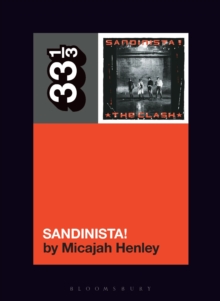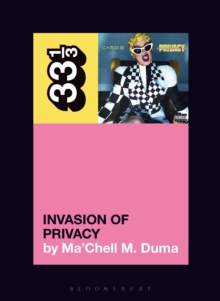
Paperback / softback
Description
Marc Woodworth's book covers the album's long and unorthodox period of writing, recording, sequencing, and editing.
It includes interviews with members of the band, manager Pete Jamison, web-master and GBV historian Rich Turiel and Robert Griffin of Scat Records.
At least sixty-five songs were recorded and considered for the album and five distinct concepts were rejected before the band hit upon the records final form.
One late version, very nearly released, contained only a few of Bee Thousand's definitive songs.
The rest were left out and nearly ended up in the boxes of cassette out-takes cluttering up Robert Pollard's basement.
The story of Guided By Voices transformation from an occasional and revolving group of complete unknowns to indie-rock heroes is very much part of the story behind the making of "Bee Thousand".
In addition to providing a central account of how the record was made, Woodworth devotes another substantial chapter to the album's lyrics.
Robert Pollard's lyrics are described by critics, when they're described at all, as a brand of tossed-off surrealism, as if his verbal sensibility is somehow incidental to the songs themselves. Nothing could be further from the truth. I want to offer a sustained discussion of Pollard's work as a writer of often sublime, beautiful, and very human lyrics.
I won't miss the chance to consider the pleasures of the absurd in this context and, of course, the contributions to "Bee Thousand" of Tobin Sprout.
The third key section of the book covers aesthetics.
Woodworth considers the great appeal of the do-it-yourself nature of "Bee Thousand" and reflects on the larger importance of the strain of alternative rock for which this record is a touchstone.
The focus is on "Bee Thousand", of course, but also includes discussion on the rise of a lo-fi aesthetic and its continuing influence.
This chapter would also provide the context for an account of rock that exists because of passion, love, and compulsive need rather than formula, money, and marketing.
Information
-
Available to Order - This title is available to order, with delivery expected within 2 weeks
- Format:Paperback / softback
- Pages:144 pages
- Publisher:Bloomsbury Publishing PLC
- Publication Date:22/11/2006
- Category:
- ISBN:9780826417480
Information
-
Available to Order - This title is available to order, with delivery expected within 2 weeks
- Format:Paperback / softback
- Pages:144 pages
- Publisher:Bloomsbury Publishing PLC
- Publication Date:22/11/2006
- Category:
- ISBN:9780826417480










